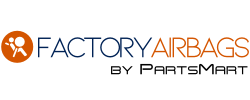Imagine this: you're driving along a quiet road when suddenly, an accident happens. In that split second, two life-saving features spring into action—your seatbelt keeps you securely in place, while your airbag deploys to cushion the impact. Together, they drastically reduce the chance of serious injury or death. But have you ever wondered how these systems work? Or why investing in high-quality replacements is so critical?
In this guide, we’ll break down the mechanics behind airbags and seatbelts, explore their life-saving potential, and share tips to ensure you’re always protected on the road.
1. How Airbags and Seatbelts Work Together to Save Lives
Airbags and seatbelts aren’t just two separate safety features; they’re designed to work in harmony to protect you. Here’s how:
- Seatbelts as the First Line of Defense:
Seatbelts prevent you from being ejected from the vehicle or slamming into the dashboard. They also keep you in the correct position for the airbag to work effectively. - Airbags as the Cushioning Backup:
When a collision occurs, airbags deploy in milliseconds, creating a soft barrier between you and hard surfaces like the steering wheel or windshield. They reduce the force of impact on your head, chest, and neck.
Together, these systems can reduce the risk of fatal injury by over 50%, according to the National Highway Traffic Safety Administration (NHTSA).
2. The Importance of Quality in Airbags and Seatbelts
While all airbags and seatbelts are designed to meet safety standards, not all replacements are created equal. Here’s why quality matters:
- Durability: Low-quality or counterfeit airbags may not deploy correctly, while subpar seatbelts could fray or fail under stress.
- Compatibility: High-quality replacements are specifically designed to integrate seamlessly with your vehicle’s safety systems, ensuring optimal performance.
- Peace of Mind: When you choose a trusted supplier, you can drive with confidence, knowing your safety features will work when you need them most.
3. Signs It’s Time to Replace Your Safety Features
It’s easy to overlook your airbags and seatbelts until it’s too late. Stay ahead of potential problems by watching for these signs:
- For Airbags:
- Dashboard airbag warning light stays on.
- Airbags have previously deployed and haven’t been replaced.
- A recall notice has been issued for your vehicle.
- For Seatbelts:
- Fraying or tearing on the webbing.
- Difficulty retracting or latching the belt.
- Signs of rust or wear on the buckle mechanism.
If you notice any of these, it’s time to act. Don’t compromise on safety.
4. Tips for Choosing High-Quality Replacements
When it comes to safety, cutting corners is never worth it. Follow these tips to ensure you’re getting the best replacements for your vehicle:
- Buy from Trusted Suppliers: Look for companies with a solid reputation and positive customer reviews (like FactoryAirbags.com!).
- Check for Certifications: Ensure the products meet industry standards and have been thoroughly tested.
- Verify Compatibility: Confirm that the airbags or seatbelts are designed for your specific vehicle make and model.
- Avoid Counterfeits: Be wary of prices that seem too good to be true—they often indicate subpar quality or counterfeit products.
Conclusion
Your car’s airbags and seatbelts are more than just features—they’re life-saving tools that could make all the difference in an emergency. By understanding how they work and prioritizing quality replacements, you’re taking a critical step toward keeping yourself and your loved ones safe on the road.
Don’t wait until it’s too late—inspect your safety features today. If you’re in need of high-quality airbags or seatbelts, browse our selection at FactoryAirbags.com and drive with confidence!
FAQ
Q: Can I reuse an airbag after it has deployed?
A: No. Once an airbag deploys, it cannot be reused and must be replaced by a new, compatible unit.
Q: How often should I check my seatbelt for wear and tear?
A: It’s a good habit to inspect your seatbelts every six months or before long trips. Look for fraying, cuts, or issues with retraction.

